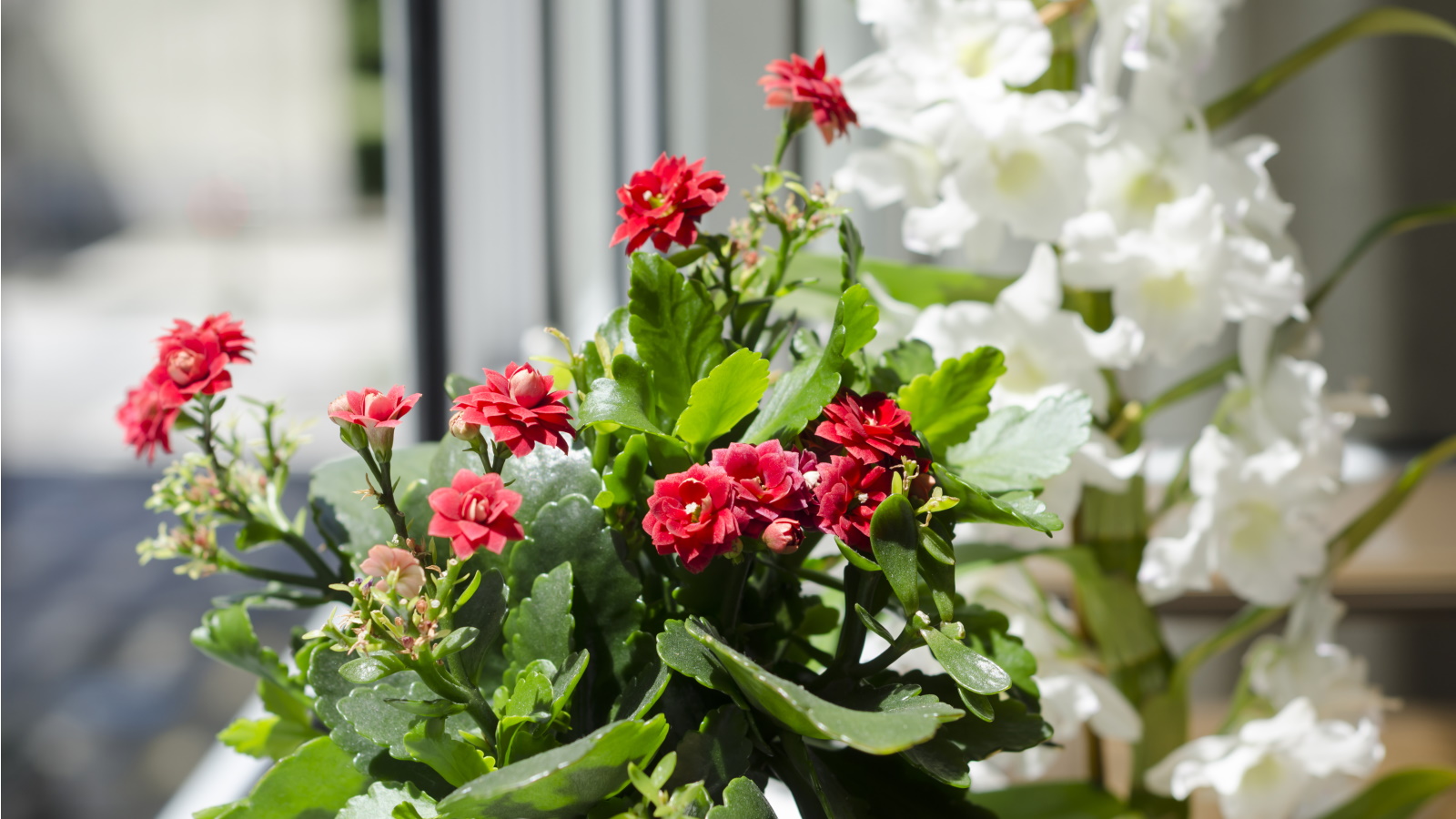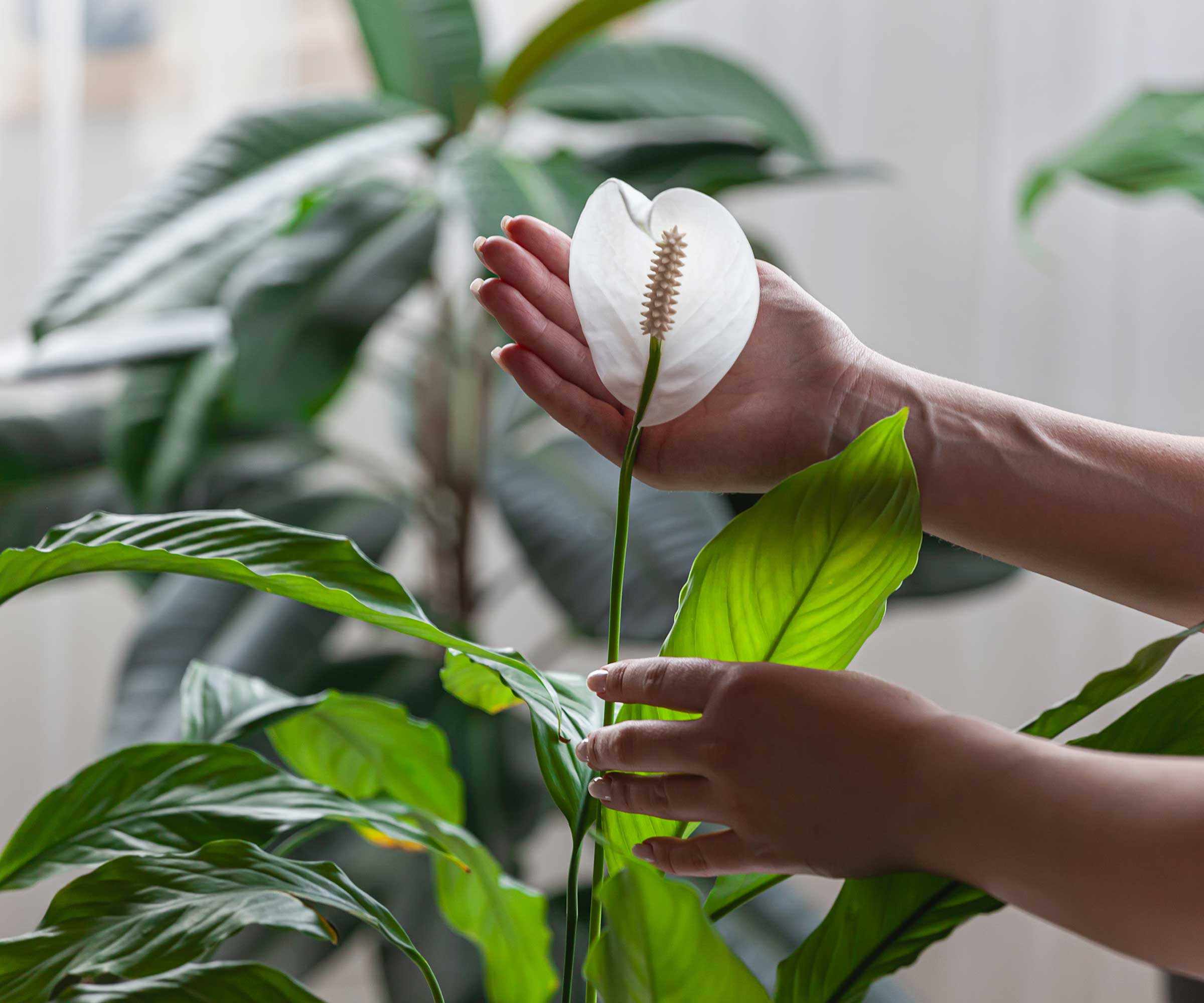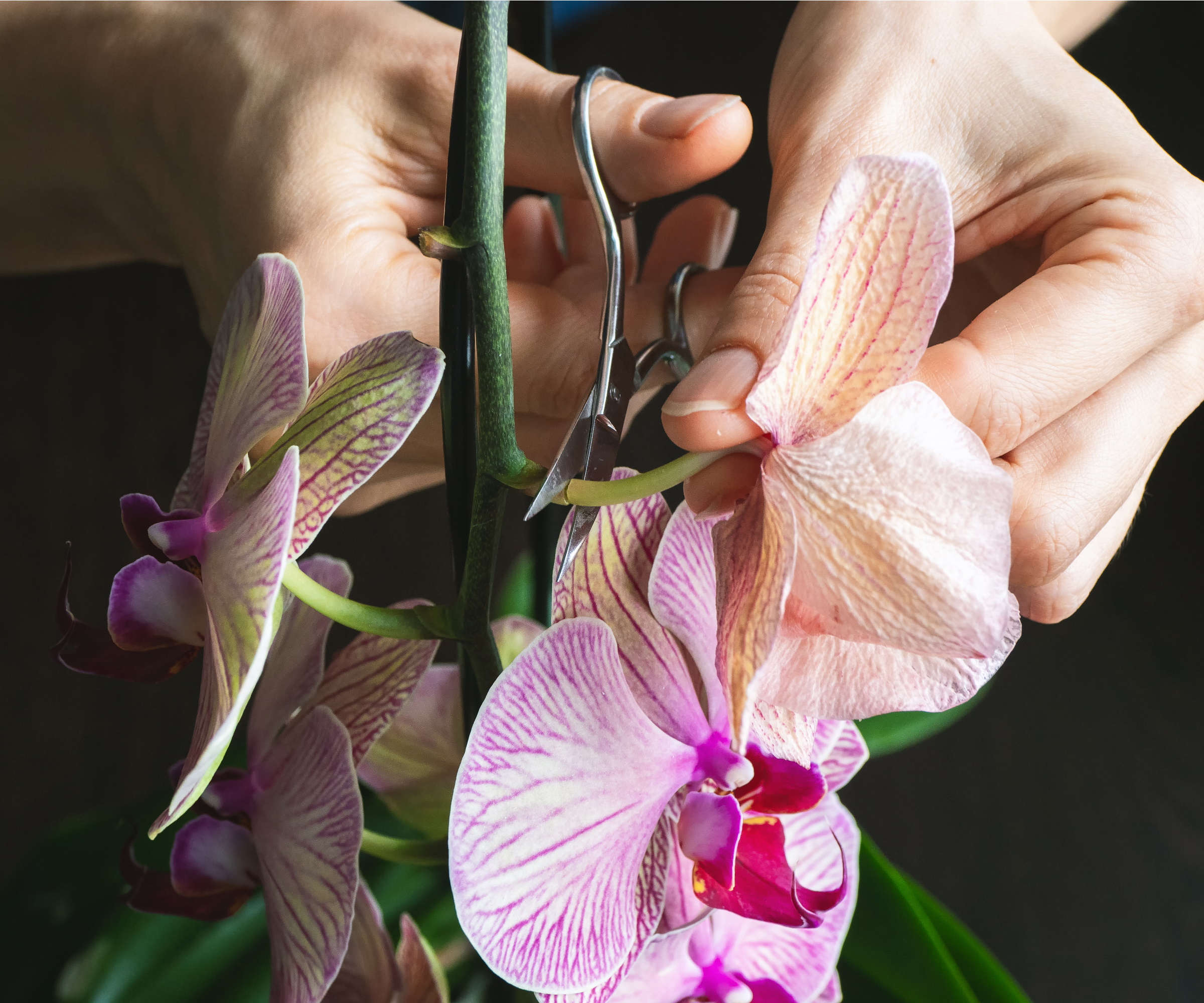Should you deadhead indoor flowering plants? Experts share tips to encourage returning blooms
It's important to give your houseplants with fading blooms some attention to keep them happy and healthy


Indoor flowering plants are beautiful additions to have in your home. For someone like me who can't get enough of collecting indoor plants and lacks a lot of outdoor space, opting for these plants means you can grow blooms in the space you do have available.
If you have also grown indoor flowering plants for some time, you've likely noticed fading flowers and wondered what to do about it. Or, if you're just starting out with growing these plants, the sight of wilting flowers may have caused you some concern. But don't fret, even the indoor plants that flower all year round will eventually have flowers that look worse for wear. This is part of the natural flowering cycle of these plants, just like annuals and perennials grown outdoors.
Not sure whether to deadhead these indoor plants or just leave them as their flowers wilt and fall off? Here, experts shed light on the matter, with advice on deadheading indoor flowering plants and how to handle fading flowers correctly to keep your plants healthy.
Should you deadhead indoor flowering plants?

In short, yes. It's wise to add deadheading to your task list of indoor plant care because removing spent blooms from your indoor flowerers aids their overall health.
'Firstly, it prevents houseplant pests and diseases that often live off of these decaying materials, which can further spread to the healthy parts,' says Melvin Cubian from Plantin. 'Secondly, this allows the plant to channel its energy reserves to produce lateral buds that will give rise to shoots or flowers, instead of creating seeds or preserving the partially dead plant organs,' he explains.
Not only this, but deadheading will tidy up your plants for aesthetic purposes. So, if your orchid is wilting or the flowers of your African violets are drooping, it's a sign they're coming to the end of their flowering cycle and need removing.
While it's true that many flowering plants will sometimes drop their spent blooms, cutting them back will allow the plant to focus its energy on growing new buds and flowers. To avoid deadheading mistakes, it's key to know when exactly to give your indoor plants a snip and how to do it.
Design expertise in your inbox – from inspiring decorating ideas and beautiful celebrity homes to practical gardening advice and shopping round-ups.

Melvin is a certified gardening and plant care expert at PlantIn, which provides a personalized experience for anyone interested in planting and gardening. He is also currently studying for his masters degree in Plant Health.
When to deadhead indoor flowering plants

As with outdoor plants, it's best to deadhead them towards the end of their flowering season. This will vary between different plants, but there are some signs you can look out for.
'For most flowering plants that grow indoors, deadheading is recommended when you see the flowers wilt or turn brown,' says Melvin. If some blooms on your plant have already dropped, this can also indicate your plant is coming to the end of blooming and you need to remove the others.
Of course, while outdoor plants are impacted by seasonal weather, indoor plants often flower at different points in the year. 'Most flowers usually wilt after a few weeks of blooming, regardless of the season, whether it is fall, winter, spring, or summer,' Melvin notes.
Some houseplants that might need deadheading include:
- Orchids
- Kalanchoes
- Peace lilies
- Anthuriums
- African violets
- Begonias
- Bromeliads
How to deadhead indoor flowering plants

To deadhead peace lilies after flowering, bromeliads after flowering, or any other flowering houseplant, you need to be equipped with essential pruning tools. These pruning snips from Amazon can help get the job done.
'Using a pair of sharp and alcohol-disinfected secateurs, make the cut just beneath the flower head. Depending on the species, you may need to cut a bit longer up to the first leaves from the flower head to encourage a new set of blooms,' says Melvin.
Always research the pruning requirements of the specific plants you have before deadheading. As a general rule, don't cut away more than a third of the plant at a time as this can send the plant into shock and hinder future growth.
'You should also avoid cutting stems that still appear green. For instance, unless an orchid stem is turning yellow, it is not recommended to remove the entire stem since new flower spikes often bud out from the old stalks,' Melvin adds.
'Cut at a 45° angle to better promote new growth,' advises Ariel Vazquez, plant expert and gardening teacher. Doing this helps reduce risk of diseases and encourages the plant to grow new blooms again, due to a larger surface area being exposed.
It's important to use clean tools when deadheading your plants, as Melvin notes, to ensure you don't pass any potential pests and diseases between plants. Likewise, always clean your gardening tools after use - this rubbing alcohol from Walmart works well.

Ariel Vazquez is a gardening teacher, the owner of Thyme & Sage Creations LLC and is certified in basic Herbalism by The Herbal Academy (2022). She has been a member of Holistic Health Educators since 2023 and is soon to be certified in holistic health coaching. She regularly hosts events and workshops sharing her knowledge of gardens, herbs, and health.
FAQs
How do I get my indoor plant to rebloom?
Each flowering houseplant will have different optimal growing conditions that will help them rebloom. However, there are a few general things you can do to get plants to produce new flowers. 'To encourage new blooms, ensure that the plant is well-fed with fertilizers rich in potassium and phosphorus and allow it to undergo dormancy for a few months,' says Melvin Cubian from Plantin. You should also keep your plant somewhere bright and continue watering it correctly through its dormant months to keep it healthy.
Many of these flowering plants make the list of low-maintenance indoor plants and will bloom happily without much attention. However, things like fertilizing mistakes and not providing optimal growing conditions can cause their flowers to fade more quickly. Make sure to research the specific care required for each of your plants to avoid this happening.

Tenielle is a Gardens Content Editor at Homes & Gardens. She holds a qualification in MA Magazine Journalism and has over six years of journalistic experience. Before coming to Homes & Gardens, Tenielle was in the editorial department at the Royal Horticultural Society and worked on The Garden magazine. As our in-house houseplant expert, Tenielle writes on a range of solutions to houseplant problems, as well as other 'how to' guides, inspiring garden projects, and the latest gardening news. When she isn't writing, Tenielle can be found propagating her ever-growing collection of indoor plants, helping others overcome common houseplant pests and diseases, volunteering at a local gardening club, and attending gardening workshops, like a composting masterclass.